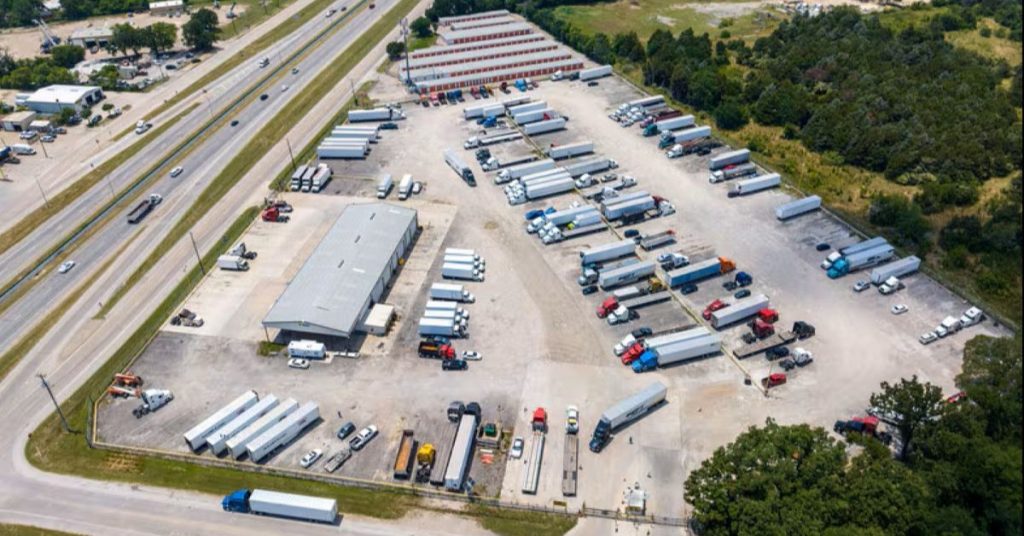A hidden outperformer has emerged within commercial real estate.
As the rapid expansion of AI and quantum infrastructure drives unprecedented construction activity, industrial outdoor storage (IOS) is experiencing a surge in demand, rent growth, and investor interest — all amid limited supply.
IOS properties are typically paved or gravel lots used to store construction equipment, vehicles, containers, or materials outdoors. They serve as essential logistical support for the movement of goods nationwide — everything that doesn’t fit in a warehouse or factory. While some IOS sites include small structures, they must occupy less than 25% of the total area to qualify for the designation.
Traditionally located near highways, ports, and other key infrastructure, these sites are increasingly serving as staging grounds for data center development. Developers now park millions of dollars’ worth of generators, tractors, and other critical equipment on IOS properties, according to Alterra IOS, which has acquired more than 400 sites nationwide.
“It’s the real estate hiding in plain sight,” said Leo Addimando, CEO of Alterra IOS. “There’s over a trillion dollars’ worth of IOS in the U.S., but much of it is municipally owned — ports, airports, shipyards. The institutional, investable market is closer to $300 billion.”
Once dominated by small, local owners, IOS is now drawing major institutional capital. In August, Zenith IOS launched a $700 million joint venture with J.P. Morgan Asset Management, creating a national portfolio with a gross asset value exceeding $1.5 billion. Similarly, Blackstone provided a $189 million loan to Alterra IOS and a $231 million loan to Jadian Capital for IOS portfolios nationwide.
According to Newmark, IOS fundamentals now outperform those of the warehouse sector that dominated the past decade’s e-commerce boom. Since 2020, IOS rents have climbed 123%, with Phoenix, Memphis, and Atlanta leading the charge. Vacancy rates are about half those of bulk warehouses, and in some markets, per-acre rents now rival warehouse rates.
“It’s bigger than self-storage, manufactured housing, marinas, or RV parks,” Addimando noted. “It’s one of the largest real estate categories still emerging into institutional ownership.”
Alterra recently secured a $150 million loan facility from Blue Owl Capital, collateralized by 21 properties across 12 states. Future tranches will fund acquisitions for Alterra IOS Venture III, a $925 million equity fund — marking Blue Owl’s first move into the IOS sector.
“Our investment reflects Blue Owl’s strategy to back market leaders in high-growth, resilient sectors,” said Jesse Hom, Blue Owl’s chief investment officer. “We see strong, sustained demand for IOS assets and believe Alterra is well positioned to lead.”
Despite strong momentum, challenges remain. IOS spans about 1.4 million acres nationwide, but zoning restrictions make well-located sites scarce. Major users include logistics giants such as FedEx, J.B. Hunt, and Maersk, as well as companies like United Rentals, TruGreen, and ABC Supply that rely on outdoor equipment storage.
Risks include overheating in the data center sector, high interest rates, tariffs, and a slowing economy — but zoning remains the biggest constraint.
“No one’s creating more IOS real estate, and municipalities rarely grant new zoning for it,” Addimando explained. “In fact, many are trying to reduce IOS acreage because it doesn’t generate jobs or high tax revenue.”
As investors hunt for yield in an uncertain market, industrial outdoor storage — long ignored and underdeveloped — is finally getting its moment in the spotlight.
Source: CNBC

